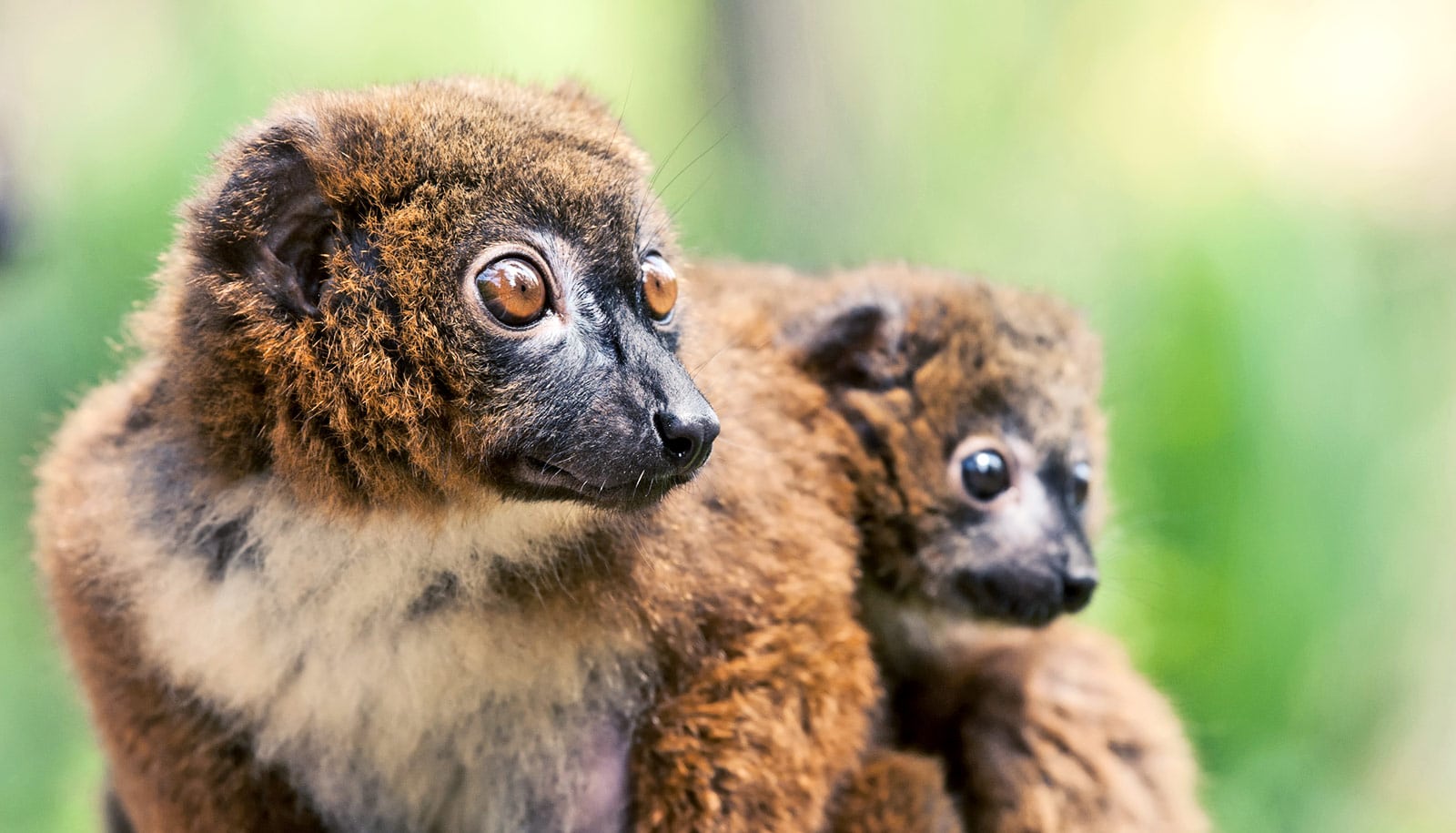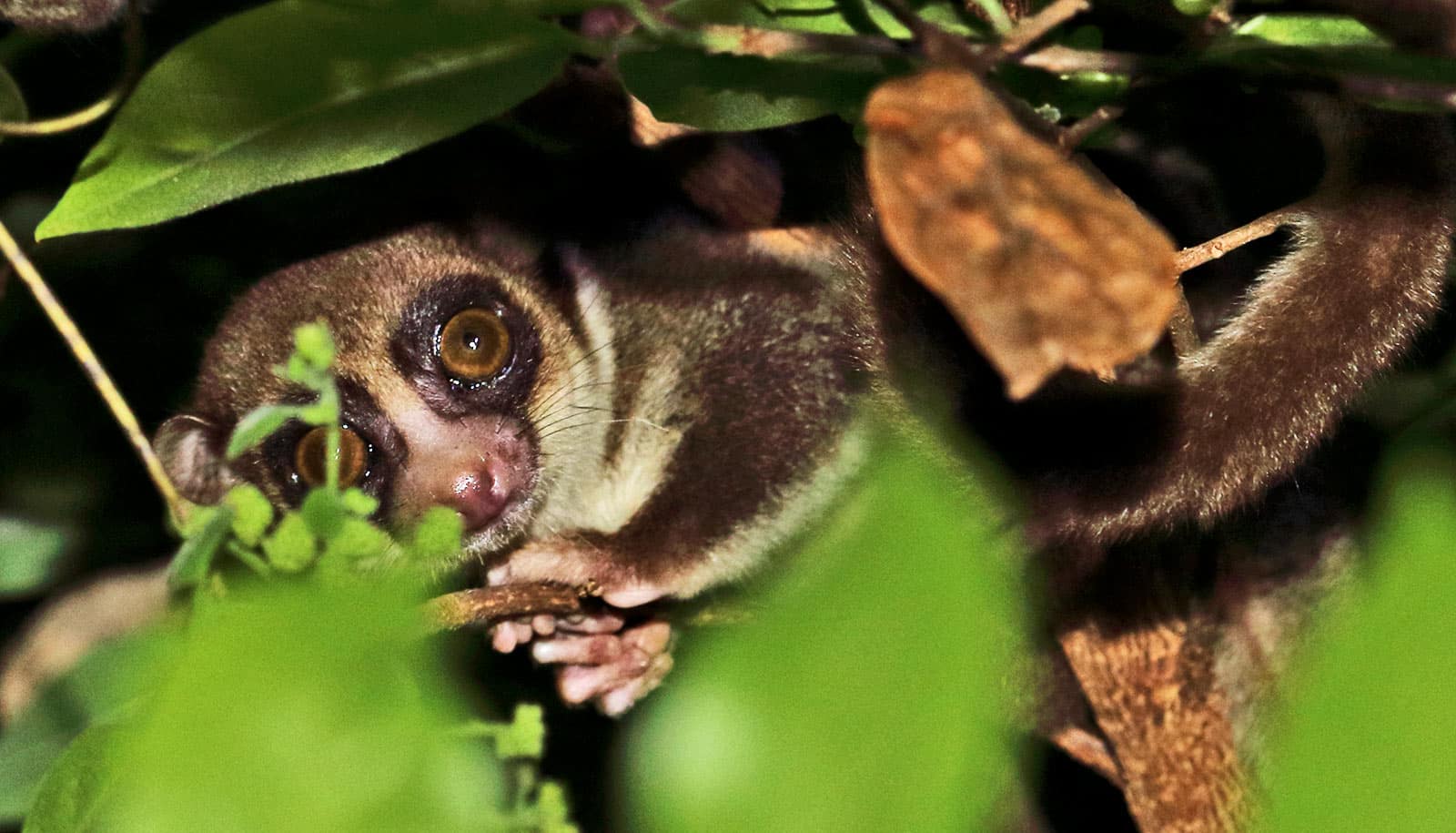Members of the same lemur family have very similar gut microbiomes due to their close proximity and physical interactions, such as grooming and huddling together in social bonding, a new study suggests.
These results could help researchers better understand how social behaviors impact the health of lemurs and potentially other species as well, even humans. In the human body, there are about the same number of human cells as bacterial cells, and the microbial ecosystem, or microbiome, looks different in each person.
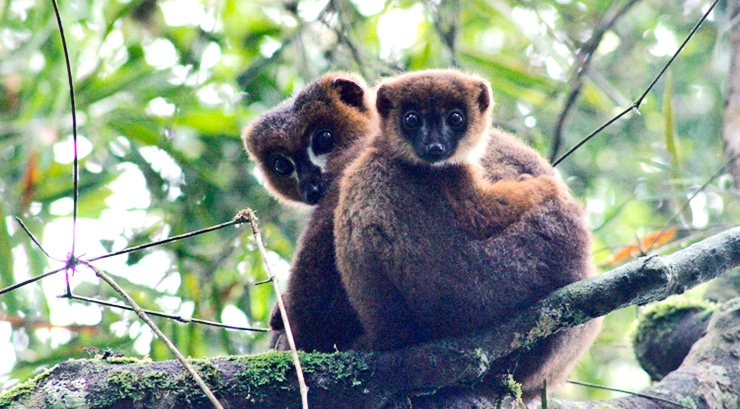
“We were interested in how the gut microbiome is shaped by social behavior, because who you interact with may be responsible for the abundance and diversity of beneficial and harmful bacteria that can impact immunity,” says primatologist Stacey Tecot, an associate professor of anthropology at the University of Arizona and co-senior author of the research.
Close families
Endangered red-bellied lemurs are a very family-oriented species. Nuclear families of three to five of the threatened primates—a mother, father, and their offspring—stick together in their treetop homes and rarely, if ever, interact socially with other lemur families.
For the new study, researchers observed the social interactions of 32 individual lemurs in eight different families living in Ranomafana National Park on the island of Madagascar. They collected the lemurs’ fecal samples from the forest floor to analyze them for microbial data.
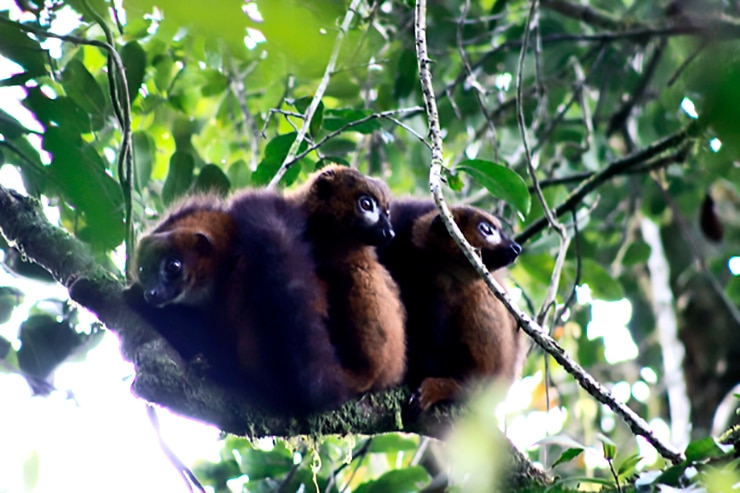
What they found: Members of the same lemur families had strikingly similar gut microbiomes, largely, it seems, as the result of their social interactions. The findings align with existing evidence on other primates.
“Red-bellied lemurs resemble chimpanzees, baboons, and even humans, in that they share more similar microbial communities with their group members than individuals in their populations at large,” says Andrea Baden, assistant professor of anthropology at Hunter College and co-senior author of the research.
“That we see such similar patterns across distantly related primate groups—and across animals more broadly—supports the notion that social structuring in the microbiome is actually quite common,” Baden says.
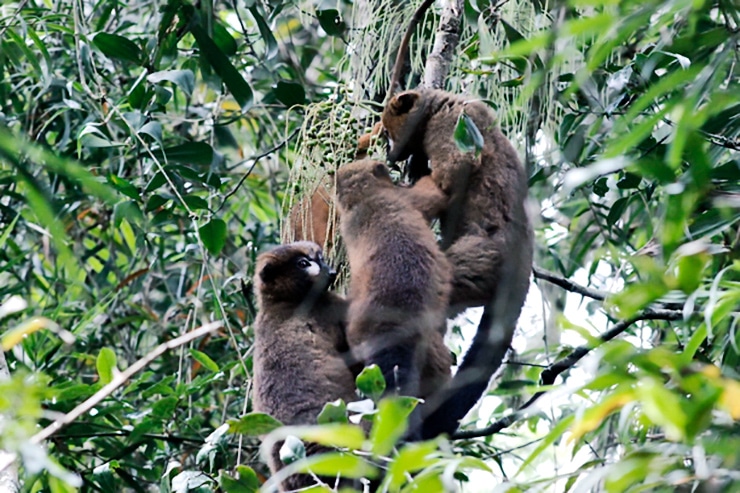
One might expect the most socially active lemur family members—those who are extra cuddly with their kin—to have an especially diverse range of bacteria in their individual guts, which would be beneficial in protecting the body against a variety of pathogens.
That does not seem to be the case, however, probably due to the fact that lemur families keep so closely to themselves that new bacteria are rarely introduced into the group, says Tecot, who has studied red-bellied lemurs in Madagascar for 17 years.
Sharing gut bacteria
Gut bacteria plays a key role in both animal and human health, aiding digestion and immune defense. And while social interaction appears to have a great impact, factors such as genetics and diet could have some influence on lemurs’ gut microbiomes as well.
“We know that infants inherit a suite of microbes from their mother during birth, for example,” Baden says. “So it is still unclear how each of these factors plays into the patterns we’re seeing here. We are now in the process of investigating whether and how genetic relatedness and diet also play a role in red-bellied lemur microbial communities.”
These gut microbes may protect babies from infections
In close social groups like red-bellied lemurs, social environment is key to immunity, says lead study author Aura Raulo, a graduate student in the University of Oxford’s zoology.
“Animals that touch and groom each other all the time tend to spread microbes, potentially both good and bad, but eventually, frequent social contact leads to synchronized microbiomes,” Raulo says. “Because microbes tune immune defense, this can be seen as a form of cooperative immunity: Sharing microbial allies and enemies makes infections by opportunist pathogens less likely.”
Humans, too?
The researchers’ findings in lemurs could have implications for humans, since people also share bacteria through physical contact.
“When people with different gut microbiomes interact, they share their symbiotic bacteria through touch. This bacterial transmission can make us more or less healthy, depending on how compatible our guts are with our friends,” Raulo says.
“For example, I might host a bacteria in my gut that is well-behaved, and fits my symbiotic gut community, but might turn out to be an invasive pathogen in another person who is not accustomed to it,” she explains.
Modifying gut microbes may fight off type 1 diabetes
“It is important to understand what builds up a healthy gut microbiome, and the role that the wider social and ecological environment plays in this,” Raulo says.
Researchers report their findings in the Journal of Animal Ecology.
Other coauthors of the paper are from the University of Helsinki; Washington State University; Northwestern University; the University of California, San Diego; the University of Colorado, Boulder; the University of Illinois, Urbana-Champaign; and the J. Craig Vintner Institute.
Source: University of Arizona
